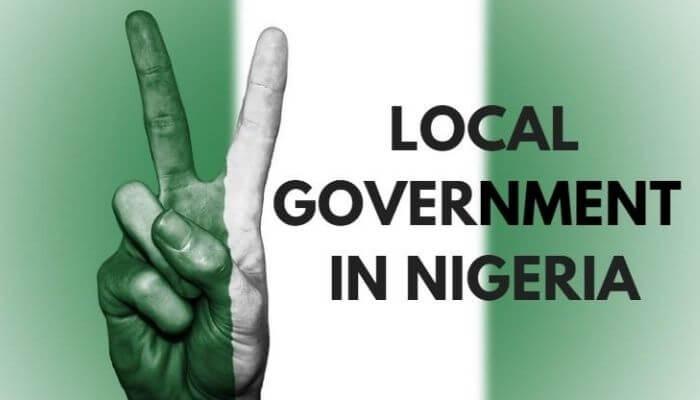How Nigeria’s wealthiest councils struggle to translate fiscal abundance into meaningful development
In Nigeria’s complex federal architecture, local government areas represent a study in contradictions. While constitutionally mandated as the tier closest to the people—responsible for primary healthcare, basic education, local roads, and sanitation—they operate within a system that simultaneously enriches a select few while constraining their developmental impact. Recent data reveal that some Nigerian LGAs command revenues exceeding those of entire states, yet the correlation between fiscal capacity and citizen welfare remains frustratingly weak.

The revenue titans: A tale of extreme concentration
The Federation Account Allocation Committee (FAAC) distributed an unprecedented ₦15.26 trillion in 2024, marking a 43 percent increase from previous years. Within this massive allocation, a stark pattern emerges: the top 20 highest-earning LGAs are exclusively from Lagos State, with Alimosho leading at ₦11.13 billion in the first half of 2024 alone. This represents more than double the annual allocation to some entire states. Lagos State’s dominance extends beyond FAAC allocations. The state generated ₦1.3 trillion in internally generated revenue (IGR) in 2024—a 45 percent increase from ₦895 billion in 2023. This wealth cascades down to its local governments, creating what can only be described as fiscal oases in Nigeria’s largely resource-constrained local government landscape.
“Despite constitutional provisions for local government autonomy, state governments effectively control LGA funds, treating them as extensions of state administration rather than independent governance entities.”
The revenue hierarchy tells a compelling story: Alimosho (₦11.13 billion), Ajeromi/Ifelodun (₦8.90 billion), Kosofe (₦8.80 billion), Mushin, Oshodi-Isolo, Ojo, Ikorodu, and Surulere dominate the rankings. For context, over a seven-year period (2017-2023), Alimosho alone received approximately ₦55.04 billion—an average of ₦9.17 billion annually. Beyond Lagos, other notable high earners include the Abuja Municipal Area Council (AMAC) in the Federal Capital Territory and the Port Harcourt LGA in Rivers State, which received over ₦15 billion from FAAC in 2023 alone. When combined with IGR and state transfers, some councils operate with annual budgets exceeding ₦30 billion—rivalling the fiscal capacity of resource-rich states.

The development disconnect: Where does the money go?
Despite these staggering resources, the lived reality of citizens in these wealthy councils often contradicts their fiscal capacity. The gap between revenue and impact reveals itself through several troubling patterns.
Infrastructure deficits amid abundance: In Port Harcourt LGA, residents navigate flood-prone streets during rainy seasons despite the council’s immense oil-derived revenues. AMAC’s sprawling areas like Nyanya and Karu remain chaotic settlements with insufficient schools and healthcare centres, belying the council’s substantial budget.
Project paradox: When projects are delivered, they frequently lack transformative scale. Analysis reveals a troubling tendency toward politically expedient but developmentally marginal initiatives—rice distribution during religious festivals, motorcycle donations to youth groups, or sponsorship of religious pilgrimages. These activities, while visible, constitute welfare rather than development.
Recurrent expenditure bloat: A significant portion of revenues disappears into bloated bureaucracies and political appointments. Many councils maintain extensive payrolls that consume resources intended for capital development, leaving minimal allocations for infrastructure and service delivery.
Read also: Local Government Autonomy fuels healthy competition amongst council chairmen – Shalum
Success stories: When governance meets resources
However, some councils demonstrate that wealth can translate into development when properly channelled. Alimosho LGA, despite its challenges, has made notable investments in healthcare infrastructure, constructing 15 new primary health centres since 2022. The ₦4.2 billion Alimosho General Hospital upgrade, completed in 2023, has reduced infant mortality rates by 18 percent within two years. Ikeja LGA exemplifies strategic resource deployment through its ₦2.8 billion investment in the Ikeja Digital Hub, creating over 1,200 direct jobs while attracting technology companies. This demonstrates how councils can leverage their fiscal advantages to catalyse broader economic transformation. AMAC’s digital governance initiatives provide another model. The council’s e-payment systems have increased revenue collection efficiency by 67 percent while reducing corruption in tax administration. Its public-private partnership in waste management has achieved 78 percent collection coverage, compared to the national average of 31 percent for local governments, resulting in a 43 percent reduction in cholera and typhoid incidences.
The systemic constraints: Why money isn’t enough
The persistent development deficit among wealthy councils stems from structural rather than resource constraints. The State-Local Government Joint Account system represents the most significant barrier to effective resource utilisation. Despite constitutional provisions for local government autonomy, state governments effectively control LGA funds, treating them as extensions of state administration rather than independent governance entities.
Transparency deficits: Even high-revenue councils often lack basic accountability mechanisms. Budget implementation reports remain largely inaccessible to citizens, making it impossible to track resource allocation or project delivery. This opacity facilitates misallocation and corruption while undermining citizen oversight.
Capacity constraints: Many councils lack the technical capacity for effective project planning and implementation. Without dedicated engineering departments or project management expertise, even well-funded councils struggle with delays, cost overruns, and quality issues.
Political fragmentation: The proliferation of Local Council Development Areas (LCDAs), particularly in Lagos, has complicated funding, oversight, and coordination. Multiple councils operating within the same geographic space often duplicate efforts or work at cross-purposes.
Read also: Local government system and constitutional crisis of federalism
The rural reality: Constraints and innovation
The contrast with rural councils is illuminating. Yobe State’s local governments collectively generated ₦11.19 billion in IGR—less than what individual Lagos councils receive monthly. Bade LGA in Yobe, operating with an ₦800 million annual budget, can adequately maintain only 8 out of 23 primary schools, while 40 percent of health facilities lack basic medical supplies. Yet some resource-constrained councils demonstrate remarkable innovation. Birnin Kebbi LGA in Kebbi State achieved 89 percent vaccination coverage through efficient resource allocation and community partnerships. Its investment in motorcycle ambulances—costing ₦2.3 million each compared to ₦18 million for conventional ambulances—reduced maternal mortality by 28 percent.
Policy imperatives: Unlocking Local Government potential
The analysis reveals several critical reform priorities. The constitutional revenue-sharing formula requires urgent review to address stark disparities between urban and rural councils. While population-weighted allocations have logical foundations, they perpetuate development inequalities that undermine national cohesion. Capacity building must accompany resource transfers. High-performing councils consistently invest in staff training and institutional development, while struggling councils lack basic project management capabilities. Federal and state governments should prioritise technical assistance and human capital development for local administrations.
Performance-based incentive systems could help bridge the gap between resource availability and development impact. Councils demonstrating effective resource utilisation and citizen satisfaction should receive additional support, while underperformers face enhanced oversight and support interventions. Most critically, the financial and political autonomy of local governments must be genuinely enforced. The joint account system should be reformed to ensure direct FAAC transfers to councils, while elected leadership should replace appointed administrators to enhance accountability.

The transparency dividend
Evidence suggests that transparency initiatives yield significant returns. Ikeja LGA’s online https://ikeja.lg.gov.ng/ budget portal, launched in 2023, enables real-time tracking of project implementation and expenditure. Citizen satisfaction surveys indicate 74 percent approval for councils with transparency mechanisms, compared to 31 percent for those without such systems. Private sector partnerships offer another avenue for maximising impact. Eti-Osa LGA’s collaboration with private healthcare providers established 12 primary healthcare centres at 60 percent lower cost than traditional procurement while maintaining superior service quality. Similarly, its ₦450 million Digital Academy partnership provides free skills training to 2,000 youth annually, achieving an 87 percent employment rate within six months.
Conclusion: The promise unfulfilled
Nigeria’s local government revenue landscape embodies both extraordinary potential and persistent disappointment. The ₦15.26 trillion distributed through FAAC in 2024 represents an unprecedented opportunity for grassroots transformation. Yet the disconnect between fiscal capacity and developmental impact reveals fundamental governance failures that transcend resource availability. The existence of councils with state-level revenues operating alongside others struggling with basic service delivery represents more than administrative inefficiency—it constitutes a systematic failure to harness local government potential for national development. While Lagos and FCT councils demonstrate what adequate resources can achieve with proper governance, the majority of Nigerian councils remain constrained by limited revenue and capacity challenges. The path forward requires not merely more resources, but transformed governance structures that align fiscal capacity with developmental accountability.

Until Nigeria’s wealthiest councils translate their fiscal advantages into genuine improvements in citizen welfare—and until resource-constrained councils receive adequate support—the promise of grassroots development will remain unfulfilled. For a nation grappling with security challenges, economic diversification needs, and infrastructure deficits, the performance of local governments becomes increasingly critical. The success stories from select councils provide blueprints for transformation, but scaling these models while addressing structural inequalities remains Nigeria’s most pressing governance challenge. The revenue is there; the question is whether the political will exists to ensure it serves the people it was meant to benefit.
Dr. Oluyemi Adeosun, Chief Economist, BusinessDay Media









